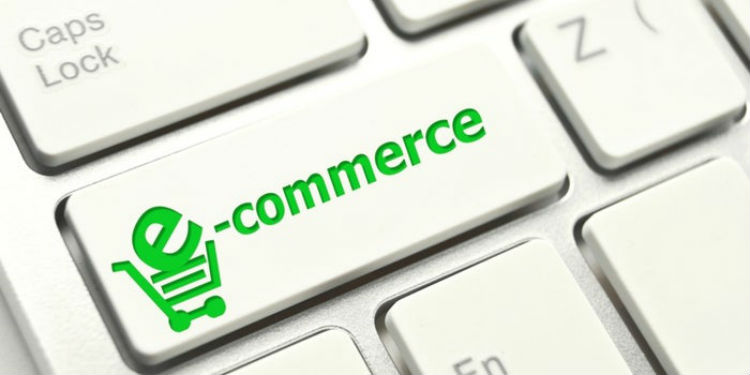Since the pandemic’s beginning in 2020, digital shopping has been reaching new heights every year. With eCommerce sales predicted to cross the $1 trillion mark in 2022, it’s more important than ever to have a reliable stream of inventory.
Finding products to sell is often a hurdle for fledgling eCommerce businesses, but it doesn’t have to be! Here are five steps to developing a procurement process that will give you a head start in the world of eCommerce:
Find a Supplier
Finding a supplier you can trust is one of the biggest challenges when sourcing inventory. With such a saturated market, you’re more likely to come across inauthentic product sites when you look on the web.
Most businesses are subject to labeling requirement laws, and when trying to find a legitimate wholesale supplier, you can use product labeling to your advantage. Labeling laws require that retailers identify their suppliers on their packaging. If you buy a sample of inventory you’d like to stock from a well-known store or distributor, you can check the label to identify the supplier.
Once you’ve identified the name or website for the supplier, you can do your own research to determine if they would be a good fit for your business. Of course, your business has to be a good fit for the supplier, so be prepared to market yourself when you reach out to suppliers.
If you can’t contact suppliers using email addresses or websites listed on packaging labels, you can also utilize resources like LinkedIn. You can contact managers, directors, and distributors directly to discuss product sourcing using social media.

Do Your Due Diligence
Doing your due diligence is a major step in the procurement process. You want to ensure that the supplier you’re working with is trustworthy and that any products you stock from them are high quality. If due diligence isn’t done correctly, you could fall victim to a scam or purchase faulty merchandise that can’t be sold.
When possible, it is best to meet with your potential supplier in person, so you can ask questions and get a better feel for the company. Of course, this isn’t always possible as suppliers are located all over the globe. When you can’t meet in person, try to do as much additional research as possible. Some questions to ask yourself when evaluating potential suppliers:
- Is this a trustworthy company?
- What do existing/past clients have to say about this supplier?
- Is the company a registered, verified business in their country?
- Is the contact information consistent across platforms? Is the contact information accurate? Do the contact methods actually work?
- What payment methods do they offer? Are payment terms flexible? Do they offer payment protection?
- What is the quality of the product? Are the products genuine? Are the products compliant?
- Did you contact the supplier, or did they contact you? (This could be important to consider, as most scam suppliers will reach out to you first.)
Due diligence may seem like a lot of work, but it’s a necessary step in the process. By doing your due diligence, you can protect yourself from being scammed and save yourself money and hassle in the future.
Get a Discount
Getting a discount is possible with nearly every supplier. Many suppliers offer built-in benefits, a percentage off their standard prices, or free shipping. Discounts can vary depending on the supplier, with many offering discounts on wholesale pricing. This can appear to be a good deal, but because eCommerce retailers don’t usually sell inventory at the suggested retail price, you may end up with thin margins. The ultimate goal is to have good margins, so it’s ok to drive a hard bargain and ask for high discounts!
For example, when competing with mega-corporations and eCommerce entities like Amazon, you have to fight for every discount you can get to promote healthier margins. Many suppliers will offer you free discounts without you even having to ask, so it won’t damage your relationship with a supplier to ask for a higher percentage; they know negotiating is the name of the game.
Gauge Demand
Choosing how much inventory to purchase and stock is challenging when you don’t know the demand for your product. After you’ve contracted with a trustworthy supplier and secured your discounts, ordering your inventory is next. But how much should you order?
To get an idea of the demand for your product, you can start with a quick Google search! You can see what people are searching for related to your product using Google Keyword Planner. You can search for specific product names and words related to the product you sell, for example, searching the exact model of the item you are selling rather than the general name of that item. If you don’t see many keyword results, it could mean that there isn’t much demand for the product.
Another resource to help you gauge demand is to look at items listed on eBay. Using eBay, you can see the number of items sold on a specific listing and look at alternative products to get an idea of the popularity of specific merchandise.
If you want to get a better idea of demand, you can also look at competitor product lines. Keeping an eye out for how much inventory your competitors stock can give you an idea of how much demand there is for a product. When you’re just starting out, you may not be able to stock the same level of inventory as your competitors, but it does give you an idea of how much product you may be able to sell.
Another helpful tip is ordering the same number of every product you stock. That way, you can easily identify which products are more popular and adjust your inventory accordingly! You don’t need to buy too much at the start, just enough to get an idea of what you can sell.

List Your Products
Now that you’ve gone through the process of finding a supplier, doing your due diligence, getting your discounts, and ordering inventory, it’s time to sell! While you’re in the home stretch, there’s still work to be done before your items can be purchased. Pay attention to the details when listing your products; this is your chance to catch a potential buyer’s interest!
Wherever you’re selling your product, it’s important to use high-quality images and write compelling product copy to catch a customer’s eye. Make the listing simple, understandable, and comprehensive for your customers––don’t leave them with questions about your product! Include real-world uses for your product and what it offers the consumer.
Get Ready to Sell
Product procurement isn’t easy, but it is a necessary step when starting an eCommerce business. It takes time and effort, but an effective procurement process can make or break a business. You can create a more efficient product procurement process using these steps and get your foot in the eCommerce door!
About the Author
Sidney Karanja – Sidney is the founder of Savo Store, a parcels to Kenya, logistics and procurement services provider that works with corporations, start-ups, and non-profits, to help them acquire and transport goods to their offices in Africa. Savo Store also operates a platform that allows individuals in Africa to shop hassle free at any U.S. retailer. Sidney founded Savo Store with the goal of eliminating some of the hurdles that plague cross-border transactions between Africa and the rest of the world


